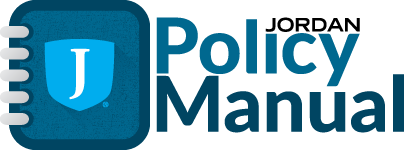- Effective: 9/13/1983
- Revision: 8/17/2010
- Reviewed: 1/26/2016
- Board Directive
The Board recognizes the need for employees to protect themselves against long-term injury and illness. A long-term disability policy will be available to eligible employees. The Board will pay the premium as agreed upon for each contract period. Appropriate application must be made by the employee. The Board delegates to the District Administration responsibility for implementing this policy. - Administrative Policy
The long-term disability policy will be implemented according to the following administrative policy provisions:- Eligible employees unable to perform all essential functions of their job may apply for long-term disability benefits.
- A 180-calendar day elimination period must be satisfied. The elimination period is a period of time an employee is continuously disabled and unable to work. The elimination period includes weekends, holidays, and summer months whether or not it is part of the employee’s contract.
- Regardless of the number of sick leave days available, employees will either terminate or transition to long-term disability benefits at the end of the 180-calendar day elimination period.
- If during the elimination period an employee is released by his/her physician to return to work without restriction and the employee does not return for at least twenty (20) consecutive work days, the elimination period will remain unchanged.
- Employees not applying for long-term disability benefits will terminate at the end of the 180-calendar day period regardless of the sick leave days available.
- Employees may use their eligible paid leave or make application for sick bank days during the elimination period.
- If during the elimination period, all available paid and unpaid leave has been exhausted and the employee is not covered under FMLA, employment will be terminated and the elimination period will be satisfied without pay.
- The application process to the long-term disability carrier should be completed within the first 90 days of the elimination period or there may be a delay in payment eligibility.
- At such time as an employee reaches the 180-day elimination date and is unable to perform all essential job functions, with or without a reasonable accommodation, his/her employment with the District will be terminated.
- The District will continue to pay the District's portion of the premium costs for medical insurance benefits for up to two years or the duration of the disability, whichever is less.
- Members of the Tier I Utah Retirement System will continue to accrue retirement service and salary credits for the duration of the time that the employee is on long-term disability, as per the District's Utah State Retirement Benefit Contract.
- If the approval takes longer than the 180-calendar day elimination period, a COBRA offer for the continuation of medical insurance will be given, if applicable.
- If long-term disability benefits are eventually approved, the long-term disability carrier will pay all back wages at 66 2/3% from the 180th day, insurance benefits will be reinstated and COBRA premiums refunded.
- If an employee receives a release from his/her physician as fully able to perform all essential job functions, with or without accommodations, during the 180-day elimination period, the release must be submitted to the Human Resources Department for review. The employee will be notified if or when they are able to resume employment.
- When an employee terminated under this policy is released by his/her physician as fully able to perform all essential job functions with or without reasonable accommodation, the employee may reapply and be considered with all other applicants for positions for which he/she is qualified. If the former employee is rehired within two calendar years of the termination date, he/she will be treated as if returning from a leave of absence.
- Eligible employees unable to perform all essential functions of their job may apply for long-term disability benefits.
